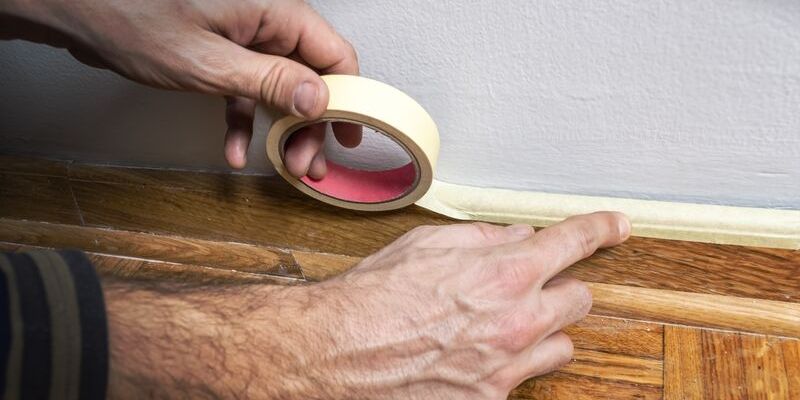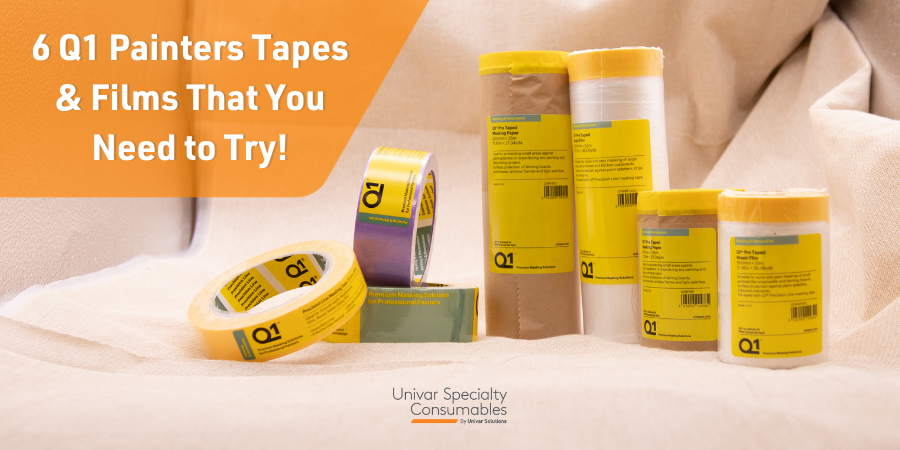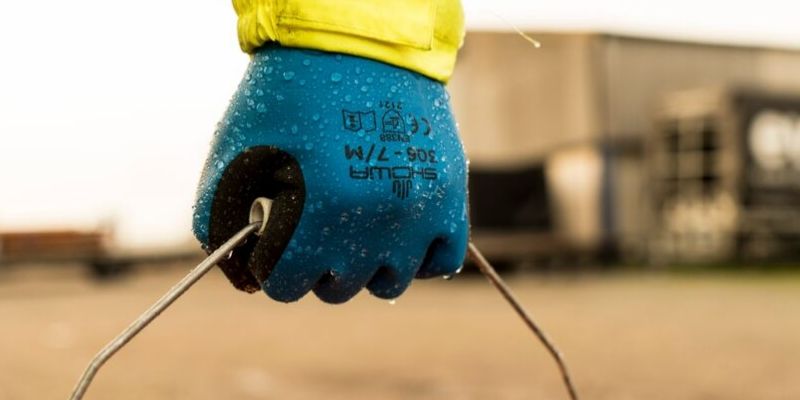What is the best masking tape to use?

So you want to know which masking tape is best to use? We're assuming that you are doing some form of painting and want a nice professional finish. It might be decorating, DIY or car bodywork spraying. In this article we will look at the different types of masking tapes in order to help you decide which type is best for your application.
Video: What is the best precision tape on the market. Credit RolfeDecor
To establish which one you need we first need to explain the difference between the products on the market currently.
The main masking tapes you will see around are:
- General purpose
- High temperature
- Low-tack or sensitive
- Sharp edge
- Outdoor
General Purpose Masking Tapes
These tapes are usually made from a form of cream coloured crepe paper and are available in various widths, tapes like 3M 101E or tesa® 4334 are classed as general purpose. They use a rubber based adhesive and are best suited for applications such as holding polythene or masking paper in place when spraying or short term painting and decorating jobs. They can usually withstand temperatures of between 30 - 70℃ depending on the tape brand.
The disadvantage of these tapes is the way they are manufactured, although they do a job they can remove paint from surfaces if left in place for too long and may leave a residue on the surface once removed. This is due to the type of adhesive that is applied to the back. General purpose masking tapes should not be left on surfaces for more than around 24-48 hours as a rule.
The next thing is what the tape is actually made of, standard crepe paper is slightly textured which gives a slightly wavy edge, this allows the paint to bleed under the tape when it is used to mask a straight line when painting which means you won't get a crisp line when it is removed but will be acceptable for some decorating jobs.
High temperature Masking Tapes
These tapes do exactly what they say on the tin, they resist high temperatures. Tapes like the 3M 501e will withstand temperatures of up to 149℃ on repeat cycles. Be aware that most high temperature tapes can only withstand these temperatures for a certain amount of time on each cycle, for example, 30 minutes in the case of 501e.
Generally, the temperature resistance of these tapes is due to the level of latex saturation of the crepe paper and use a silicone adhesive that can withstand higher temperatures. Similar to the general purpose version these tape won't give you a crisp clean line but can be used for auto-body repair and powder coating applications where the substrate needs to go through a curing oven of some sort. There are a variety of specific powder coating tapes available that are made from PET-Polyester to help them withstand even higher temperatures of up to 220℃.
Low-tack Masking Tapes
If you are looking for a tape to apply to a freshly painted or freshly plastered surface then low-tack is the best option. In terms of the names there is little difference but different brands refer to it differently. The most general term is low-tack but brands like tesa® refer to their version as 'Sensitive' as they are for delicate surfaces. For reference Frog tape call theirs 'delicate'.
Low-tack tapes have a specialist adhesive that that is designed to be less aggressive than general purpose masking tapes. that can be removed from delicate surfaces without damaging the surface or leaving residues.
Something to be aware of with low-tack or sensitive tapes is the length of time that they can be left on a surface for. This will vary depending on the brand, below is a guide of the recommended amount of time that the tape will remove cleanly from a surface for some of the most common brands.
- tesa® 4333 Sensitive tape = 14 days
- Frog Delicate Surface tape = 60 days
- 3M Blue 2090 tape = 14 days

Sharp Edge Masking Tapes
Sharp edge masking tape is the go-to tape for most painters and decorators as it allows you to get a crisp line when painting. Most precision tapes will come in a range of widths and tack levels including low-tack and outdoor.
Similar to the general purpose tapes it is all about the construction. Most sharp edge tapes are made from specialist papers, for example the tesa® Precision Mask® range are made using Japanese rice paper and use an acrylic adhesive. This is what gives the 'no paint bleed', they are also thin which prevents paint build up at the paint edge and gives the razor sharp lines.
Brands like 3M and Frog apply what they call 'paint block' or 'edge lock' technology to their tapes to prevent the paint from bleeding under the paper but bear in mind this is a chemical treatment and is susceptible to environmental conditions.
Again something to bear in mind is the length of time the tape can be left on a surface. Guideline times are:
- tesa® Precision Mask 4334 = 6 months indoors
- tesa® Precision Mask Sensitive 4333 = 14 days
- 3M Scotch Blue Painters tape = 14 days
- Frogtape Multi-Surface = 21 Days
- Frogtape Delicate Surface = 60 Days
Outdoor Masking Tapes
An outdoor or exterior tape is just that. They are designed for use outside when painting houses and other exterior applications. Outdoor tapes like the tesa® 4440 and 4439 are UV and moisture resistant so won't deteriorate in sunlight or damp conditions, they also use a different type of adhesive and are usually thicker so they can stick to more uneven surfaces.
There are other variants of exterior tapes such as the tesa® Premium Orange tape that is designed for use when plastering or rendering and will resist certain alkaline solutions and weak acids.
Often duct tapes are used for outdoor application but you need to check the UV resistance as most duct tape use a rubber adhesive and risk being baked onto the surface by the UV/ sunlight which will damage expensive brickwork or plaster/render.
Look after your tapes
It may sound odd but tapes, although a consumable are sensitive items and do require a bit of care to ensure they do their job properly. Especially with the more specialist tapes.
What we mean by this is, the adhesive on the tapes are susceptible to fatigue if left in a cold van for example. Also with tapes such as the Frogtape versions, have a have 'paint block' features that once exposed to the air starts to cure so when you buy it don't throw the nice little box away, otherwise the next time you come to use the tape it probably won't be sticky anymore.
Your tapes should be stored on a dry, clean environment such as a systainer. Before using the tapes make sure you acclimatise them to the area that they are going to be used in.
Conclusion
So now you know about this different masking tape types, in order to choose the right tape for your application it is important to think about;
- Am I working inside or outside?
- What am I going to be sticking the tape to?
- Will the substrate be going into a curing oven?
- Do I need a crisp clean line when the tape is removed?
Generally for painting and DIY jobs spending a little more on a masking tape will pay off as it will give a better finish and will remove cleaner thanks to the better quality adhesives used on these tapes.
Be sure to spend the time on the prep and masking as this will save you time at the end of the job and will help the tape to adhere to the surface and give you a top quality finish.
Which masking tape will you use?


